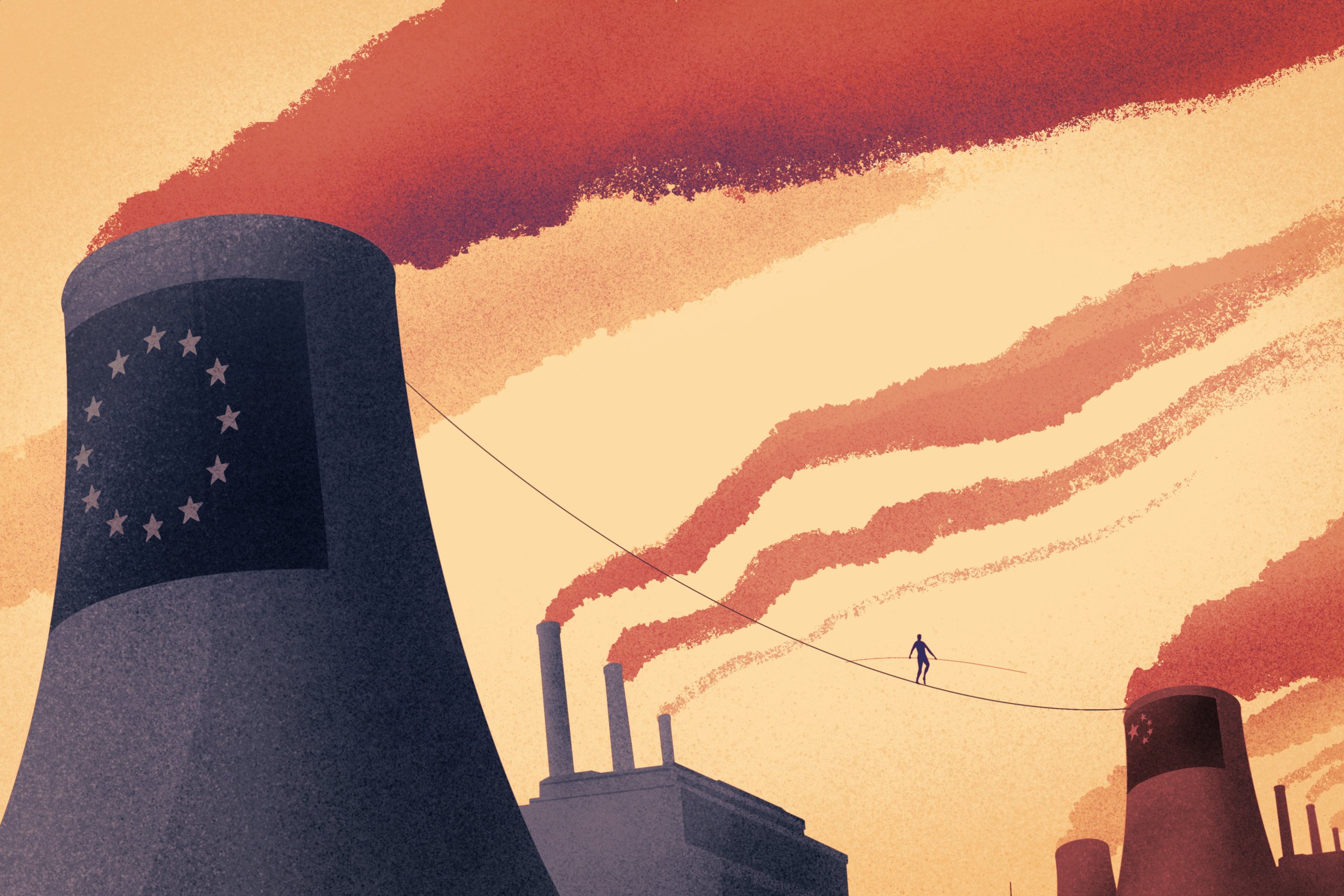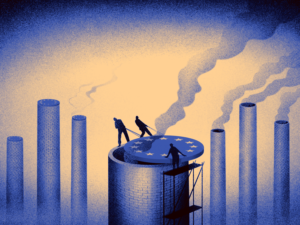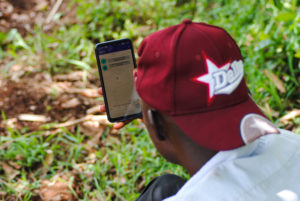The EU launched its emissions trading system (ETS) in 2005, and it now covers 11,000 emitters and almost half of European emissions. It uses a market-based cap-and-trade system to reduce greenhouse gas emissions from large power stations, industrial plants and flights within Europe.
China and the EU after the pandemic
Read more from this series, in which we compare the post-Covid policies of China and the European Union, and how their relationship is evolving
Since then, several other national or sub-national carbon markets have either been fully launched or partly developed – notably in Canada, Japan, New Zealand, South Korea, Switzerland and the United States. But the EU has worked particularly hard to build a collaborative relationship with China – to help develop the carbon market concept – because China’s size makes it the obvious market leader in Asia.
China’s ETS began trading last year, and so far only covers the power generation sector, but “the 2,162 companies it includes produce an estimated 4.5 billion tonnes of CO2 emissions annually,” writes Renato Roldao in Energy Monitor. “That compares with an EU ETS emissions cap in 2021 of 1.6 billion tonnes of CO2.”
In 2014, the EU cooperated with China on designing and implementing China’s carbon market and supporting a roll-out of seven regional pilot schemes across the country. Three years later, at the COP23 UN climate conference in Bonn, that cooperation facilitated the creation of China’s national ETS. Commissioner Arias Cañete said at the event that the ETS would, “undoubtedly send a strong signal to the rest of the world in support of carbon markets. The EU is therefore pleased to engage in even closer bilateral cooperation with our Chinese counterparts.”
The rationale underpinning this EU–China cooperation is that by sharing its experience with China, the market with the greatest potential to reduce global emissions, the most established carbon trading system, the EU, can expedite progress in the fight against global warming.
Barbara Pongratz, an associate analyst at the Mercator Institute for China Studies (Merics), told China Dialogue: “The goal of EU–China dialogue on carbon markets is to combine knowledge and enhance our common understanding of ETSs.” Being the global ETS market leader, the EU was able to share knowledge gained from its experience. However, as Pongratz says, “regular bilateral policy dialogues between the EU and China are a mutual learning process and, given the sheer size and complexity of the Chinese ETS, European stakeholders are learning a great deal from China’s experience as well. ETS development is a procedure of constant exploration and enhancement.”
Differences in market design
China’s ETS, being at an earlier stage of development, differs from the EU ETS in a number of ways. The main difference so far, Roldao says, is that China’s system has no absolute cap, and is based instead on carbon intensity. Under this system, the emissions of individual companies are compared against the average carbon intensity of the relevant sector. Each emitter is allocated emission allowances free of charge, and if they can reduce the carbon intensity of their operations, they can sell surplus allowances.
This system is designed not so much to phase out coal in favour of renewables but to phase out the less efficient coal plants, so making the overall coal sector more efficient. As Roldao explains in his article: “The same overall volume of electricity would be generated by coal as without the ETS, but the increased efficiency would lead to lower emissions overall.” In this way, the Chinese government can work towards its global warming targets without compromising the country’s energy security.
China, like the EU, also makes use of scarcity as a policy tool to reduce emissions. Roldao writes: “Once the cost of carbon is fully reflected in the cost of energy, it will change power plant cost structures, which is likely to accelerate reform of the Chinese power market, leverage green financing and galvanise the uptake of emission reduction technologies.”
Linking up carbon markets
For policymakers, faced with a proliferation of carbon markets around the world, an obvious next step is to gain synergies by linking up with other markets. The EU has for example linked up with Switzerland. China, too, is working with its neighbours to develop a regional carbon market, leveraging trade relations built over the years with the ASEAN bloc. Though regional ETS harmonisation makes sense, analysts at the Green Finance & Development Center say this is difficult to achieve in the short term, as the development of individual carbon markets in Vietnam, Indonesia, Thailand and the Philippines is still at an early stage. For now, the analysts suggest, “the main focus should be to assist Southeast Asian countries in completing the infrastructure construction of the [regional] carbon market, improving the legislation of carbon market construction, building an effective MRV (measure, report, verify) system, and exploring the development of the pilot carbon market.”
Jessica Green, associate professor at Toronto University, writing in Nature magazine, says “linking markets together should promote trading, smooth financial flows and lower the overall cost of reducing emissions. A global price on carbon emissions would emerge without the need for long and fractious diplomatic negotiations.” However, she points out the reality is more complex: “Linked carbon markets are difficult to manage when many regulatory authorities compete. Interactions with other climate policies trigger unintended outcomes. Policymakers find it hard to keep prices at the ‘right’ level – neither so high that a carbon market becomes politically unacceptable, nor so low that it fails to change behaviour.”
If a regional carbon market is challenging, a global one is even more so. Pongratz says: “The introduction of a global carbon market is an ideal scenario that, however, seems unrealistic at present. Several hurdles must first be overcome, as the different ETSs, especially those of China and the EU, are at different stages of development and use different approaches and mechanisms that are currently difficult to align.”
Alternatives to harmonising carbon markets
It will be some time before China can match the coverage and maturity of the EU ETS, Pongratz says. The EU, as the ambitious climate policy leader, is keen to accelerate the process and has exerted political pressure by proposing the Carbon Border Adjustment Mechanism (CBAM). This is essentially a carbon tax on imports of certain products to protect climate action in Europe and to prevent the “carbon leakage” of European companies outsourcing their production to countries with weaker emissions targets. She adds: “Using CBAM as a last resort, it wants other major emitters and trading partners to step up their carbon pricing efforts. The more developed carbon pricing systems in a specific country are, the less they will be affected by CBAM. CBAM should also serve as an incentive to push forward global debates on carbon pricing, one type of which is emissions trading.”
Green believes that, within a global system, national carbon markets should limit their links to other markets. She says China “made the wise decision to remain independent, providing leeway to fix the problems that will inevitably arise. It should postpone any other linkages being considered. Similarly, policymakers should reject offsets from other jurisdictions.”
Governments tend to avoid difficult political decisions. As a solution, Green favours the creation of a central carbon bank to manage allowances and prices. She points to the EU’s Market Stability Reserve for the EU ETS, which performs similar functions: “governed by detailed rules, it leaves little opportunity for member-state influence”. In theory, a central carbon bank could perform a similarly useful, independent intermediary role. In practice, she says, the likelihood of this happening on a global basis is slim.
Managing volatility in the EU ETS
With carbon markets still in their infancy, a global version may yet happen. When the EU was ready in 2017 to help China build its carbon market, its own ETS was struggling with an overabundance of allowances that had depressed the carbon price, giving industries little incentive to participate in the system. This problem has now been solved. Today, in Brussels, discussions are focused on the need to address the volatility of carbon prices – the forecast had been for around €30/tonne, but they are now about €100. This volatility is driven by several factors, including: the uncertainty caused by continual policy change (such as the goal for reducing greenhouse gas emissions across all EU economic sectors shifting last year from 40% by 2040 to 55%); the repercussions of the Covid-19 lockdowns on the global economy; and now the effect of economic sanctions on Russia for its war against Ukraine.
But one factor some policymakers don’t like – or perhaps one they can do something about – is that many market participants are financial players speculating on EU carbon price movements. Since 2018, the number of active investment funds in the ETS has tripled, to more than 300, with non-EU financial players accounting for about a third of the market share. On the one hand, this speculation helps to develop the market by finding a true market value for carbon. On the other, it has also pushed up carbon prices for companies needing allowances, which in theory works against the main aim of the ETS of encouraging participation. Another factor for policymakers to consider, however, is that a higher price would help fund the development of green hydrogen, viewed by some as the technology of a decarbonised future.
One proposal is to restrict access to the EU carbon market for non-EU financial players. Other proposals include taxes on certain transactions, minimum holding periods to reduce short-term speculation and limits on financial positions. The aim is for greater price stability, but policymakers will also be looking to balance the competing needs of meeting the 2030 climate targets, finding the right price that fosters the growth of the carbon market, and not choking industry with too much costly regulation.
A Chinese translation of this article will be available soon.








